An official account of all species that have been recorded and reported by birdwatchers and naturalists in the Poole Harbour area since records began.
The data for this list has been extracted from various sources, but George Greens 'The Birds of Dorset', Mansel-Pleydell's Birds of Dorsetshire, Naylor’s reference manual of rare birds and the back catalogue of Dorset bird reports have provided most information. Data is currently still being researched and records will be updated accordingly.
You can view this information in two different ways. Our alphabetical list provides information on the status of each species within the harbour, finder dates and names, photos and favoured locations. By clicking on the Systematic List button you will be presented the full Poole Harbour systematic list which includes status of species, pending records and historical accounts.
To date, 333 species have occurred and have been accepted within the Birds of Poole Harbour boundaries. A further 11 distinct subspecies have also been seen. In addition, we have two species/subspecies which have been recorded, but are awaiting acceptance by the appropriate records panel.
There are a handful of historical records, for which there is currently insufficient information to allow their inclusion onto the Poole Harbour list, but are believed to be genuine records. They are listed at the end of the list.
Finally, there are a number of feral or escaped species that have been recorded within the Birds of Poole Harbour boundaries. They are included for completeness, but are not included on the Poole Harbour list.
We would be interested in hearing details of any species that do not appeared on this list.
The Birds of Poole Harbour systematic list is a PDF which you can view by clicking on the button below. It was last updated on December 2019.
Full Poole Harbour Systematic List
Canada Goose
Latin Name
Branta canadensis
Status
Resident
Site And Records Information
This regular breeding bird first turned up in 1954 when one was shot at Sandbanks on the 2nd October. In June 1957 ten pairs were introduced to Poole Park by wildfowlers, followed by more in 1959 and by 1960 there were around 70 in Poole harbour. Brownsea was the main breeding area with with 66 pairs in 2001 and 57 pairs in 2004. They also breed at Arne, Brands Bay, Green Island and Little Sea. Large numbers also congregate on the lawns of Poole Park where they are regarded by many as pests, chasing unsuspecting locals feeding the ducks. Occasionally they are cause of a council cull debate, normally in relation to the mess they make around Poole Park where they chase unsuspecting locals feeding the ducks and roost at night.
Large numbers feed on the fields along Ballard and they fly from Poole Park back and forth across the harbour mouth and along the coast. There were at 500 Ballard Down 16th Sept 1988. They also feed at Arne, Greenlands Farm, Middlebere and around the house at North Bestwall Park. Numbers normally peak in August when there is a large moulting flock around Swineham and Arne. In late 2019 a large group of 500+ visited Upton Country Park every morning, arriving in from an unknown roosting area north of the harbour. Shooting of Canada Geese still occurs in the harbour.
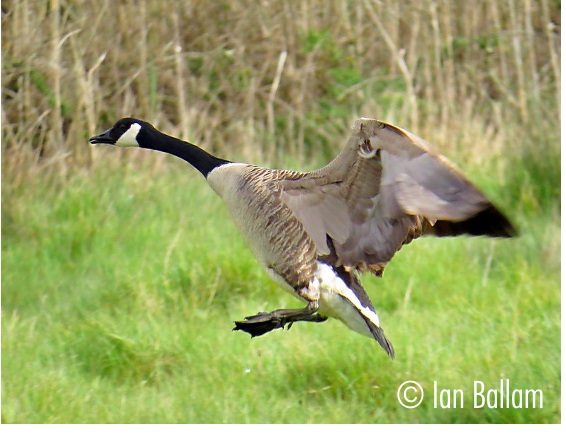
Carrion Crow
Latin Name
Corvus corone
Status
Resident
Site And Records Information
Found right across the harbour in rural areas. Winter flocks of up to 600 birds have been observed. ‘Fishing’ Carrion Crows can be observed along the Baiter car park in autumn and winter, picking up cockles and whelks before dropping them on to the hard tarmac, a behaviour we probably haven’t seen in the harbour for almost 200 years since corvids were heavily persecuted.
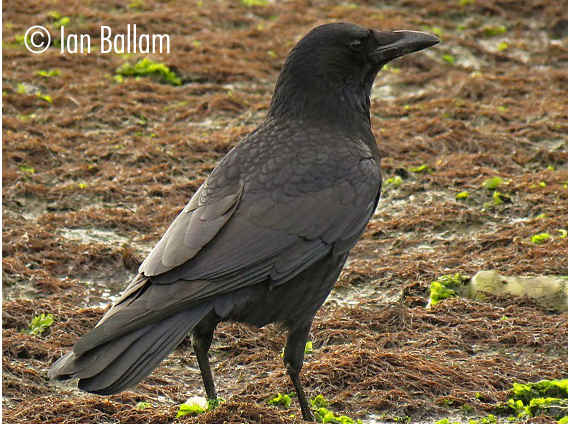
Caspian Gull
Latin Name
Larus cachinnans
Status
Vagrant
Site And Records Information
A rare but increasing visitor to UK shores and inland sites with Dorset sightings rising considerably in recent years. Poole Harbour has only two records but its likely some Caspian Gulls go un-found due to the size of the harbour. Scanning gull flocks during the winter and spring could reward you with a Caspian Gull.
A 1st S was present briefly on 19th Feb 2003 at Corfe Mullen tip (J.Lidster)
A 1st winter in Wareham Channel on 22nd October 2017 (M.Lawson)
A 2cy on 14th Aug 2020 in Brands Bay (D.Mitchell).
A 1cy on 25th Oct 2020 in the Wareham Channel (Phil Goble).
A 1st winter on the Brownsea Lagoon webcam on February 5th 2021 (P.Morton)
A 1cy from Jerry’s Point, Studland, 7th November 2021 (P.Saunders)
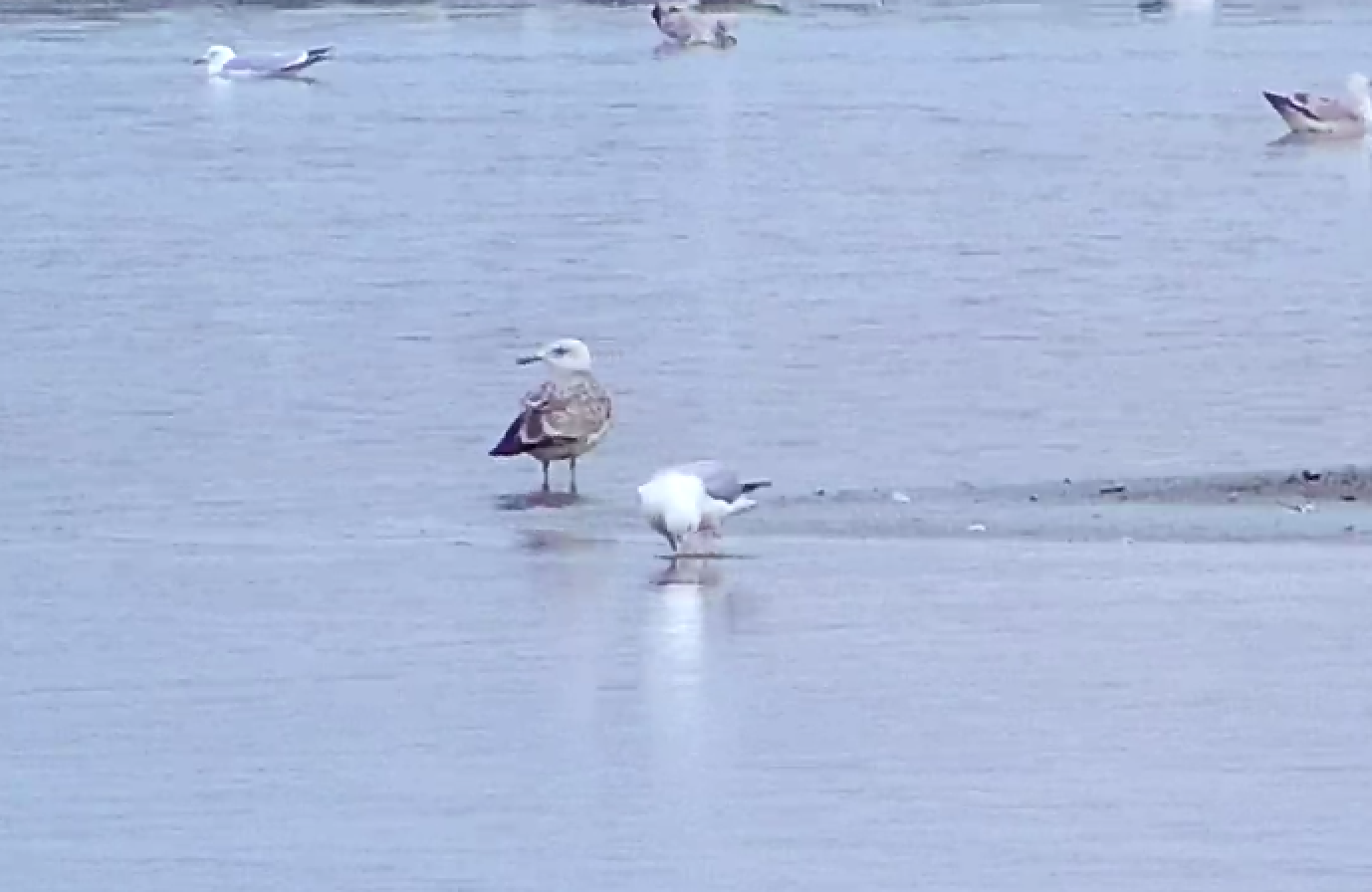
Caspian Tern
Latin Name
Hydroprogne caspia
Status
Vagrant
Site And Records Information
Up to 2022 there have been 20+ Dorset records with only 5 in the harbour and none have stayed long enough to be seen by many birders. News of the next one will have birders dashing to their cars.
1 killed in July 1872 at Wareham
1 on 28th July 1984 off Brownsea Island (M.A.Hallett, R.Newton)
1 on 3rd August 2011 on Brownsea Lagoon (S Holmes et al)
1 on 6th July 2012 on Brownsea Lagoon at dusk. (C.Thain).
1 on 16th July 2022 on Brownsea Lagoon (J.Owen)
Cattle Egret
Latin Name
Bubulcus ibis
Status
Scarce but increasing Visitor
Site And Records Information
This species was rare in Britain and Dorset until 2006. A large influx occurred in late 2007. By 2009 it had been removed from the BBRC list. However the influx was not sustained and there had not been a record in the harbour for more than 3 years (up to Nov 2015). However, a large influx into the UK during 2017/18 saw a colony form on the Somerset Levels and breeding was also confirmed in West Dorset in 2017. Since then numerous records have been obtained from several sites around the harbour with a high count of 7 birds in the Frome Valley in autumn 2018 and by December 2018 a flock of 20 were frequent in the Frome Valley. Late summer/early autumn often see’s ‘new arrivals’ passing through the harbour with multiple birds often counted. Possible breeding was suggested for the harbour area in 2023 with a flock of 7 in mid-July feeding in fields next to Wareham Quay which contained several fresh juveniles.
1 on 26th Aug – 31st Dec 1996 at Ower (N.Symes et al). Also seen at Studland in the roost.
1 ‘summer 1985’ on Wareham Floodplain (Mo Constantine)
1 on 30th Jul 2001 at Middlebere (E.Thorpe et al)
3 on 2nd Nov 2007 at Arne (M.Singleton et al) then Bestwall on 4th – 12th Nov (B.Spencer et al)
4 flew north on 3rd Nov 2007 at Lytchett Bay (M.Gould, S.Robson et al)
1 on 27th Nov – 6th Dec 2007 at Upton Country Park (L.Kirton et al)
1 from 22nd Feb -18th Mar 2008 East Holme Water Meadows (D.Liley et al)
1 on 19th Apr – 1st Jun 2008 at Lytchett Bay (S.Robson et al)
1 on 10th Aug 2008 at Ower (S.Robson, M.Smith) and the at various places in the southern harbour until 27th August (S.W. Smith et al)
1 on 18th Oct – 1st Nov 2008 at Ballard Down (S.W.Smith et al)
1 on 25th Oct 2008 at Lytchett Bay (S.Robson, M.Smith)
1 on 3rd Jan 2009 at East Holme (K.Lane)
1 from 7th Mar 2009, joined by second from 11th Apr, at Wareham Water Meadows (J.Mitchell, I Pillow et al). Also seen Swineham & the Slepe/Arne Heronry. Last seen 9th May. No breeding attempted.
1 on 27th Mar – 8th Apr 2010 at Wareham Water Meadows (J.Mitchell et al)
1 on 20th – 23rd Dec 2011 at East Holme (I.Lewis et al)
1 on 10th – 13th Apr 2012 at Lytchett Bay (P. Morton et al)
Records since the recent national influx
2016
East Holme 1 from 12th-28th Dec (per DBC et al).
2017
Lytchett Bay/Fields 2 on 3rd Apr (S Robson), 1 on 12th May (S Robson), 1 over on 15th May (IM Lewis), 1 on 9th Sep (per M Wood), 1 on 4th Nov (ID Ballam).
Middlebere 8 on 16th Jul, 8 on 16th Aug.
Arne RSPB 3 on 10th Jul.
Arne Moors RSPB 1 from 24th Apr into Jun, also frequenting Bestwall; 1 on 3rd Nov in the Wareham Channel.
Ballard Down 1 on 17th Oct.
East Holme 2 at Holmebridge 10th-12th Apr, 1 at Holme Lane 29th Dec.
Swineham GPs 1 on 13th, 14th & 16th Mar.
Wareham 1 on 26th Apr.
2018
Arne RSPB/Middlebere Single birds on 28th Jun, 1st, 24th, 25th & 31st Jul and 1st Aug.
Bestwall RSPB 6 on 10th Nov, 2 on 15th Nov and 17 on 16th Nov.
East Holme Varying number of birds present on 25 days between 1st Nov and 31st Dec with a peak of 17-20 birds between 23rd Nov and 14th Dec.
Swineham 1 on 1st May, 20 on 5th Nov and 21 on 6th Nov.
Wareham Birds were reported on flood meadows and at Stoborough between 6th Oct and 28th Dec, peaking at 20 on 17th Nov and 18 on 22nd & 26th Nov.
Wareham Channel 1 on 4th May, 1 on 25th Nov, 18 flying up the channel on 14th Dec.
1 or 2 birds were also reported from Brownsea Island (1 on 22nd Jul), Little Sea, Studland (1 in egret roost on 17th Jul), Lytchett Bay (singles on 6th, 19th & 20th Sep with 2 on 8th Sep), Studland village (1 on 9th Feb).
Stoborough 2 in flight on 27th Jan.
Upton Heath 1 in flight on 10th Apr.
Wareham area 1 flew E towards Organford on 25th Feb and 3 W on 18th Apr.
2019
Arne Moors RSPB 6 on 11th Feb, 14 on 25th Apr.
East Holme Present between 2nd Jan and 1st May with a peak of 9 birds on 2nd Mar.
Stoborough Max of 9 birds between 22nd Jan and 22nd Apr.
Swineham GP 4 on 1st Jan, 12 on 24th Apr and 10 on 9th May.
Poole Harbour 3 at Lytchett Bay on 3rd Sep, 4 at Holton Heath on 4th Sep, and singles also seen at Arne Moors RSPB, Stoborough, Swineham GPs and Wareham.
Studland village 3+ on 22nd Dec.
Holmebridge (2nd Dec).
2020
Swineham GPs 3 on 16th Apr.
Wareham Common 4 on 17th Apr.
Arne Moors RSPB 1 on 25th Aug.
Lytchett Bay 1-2 present 13th Jul to 18th Aug with 5 on 9th Aug.
Swineham GP 1 or 2 between 26th Jul and 30th Aug with 6 on 26th Aug.
Arne Moors RSPB 1 on 9th Oct.
Swineham GPs Up to 3 at the GPs or Bestwall RSPB from 6th Sep to 4th Oct.
2021
Lytchett Bay singles on five dates between 1st -12th Jan and on 16th and 28th March. Singles of 27th Sept and 26th Oct.
Swineham GP 1-5 birds present from 8th Feb – 28th April. Max of 6 between 2nd Sept and 21st Oct.
Wareham Common – 4 on 11th Nov, 12 on 15th Nov.
2023
Swineham Meadows – 10 on 26th Aug.
Holmebridge – 10 on 8th Dec.
Stoborough – 12 on 3rd Nov and 19 on 12th Nov.
Swineham Meadows – 12 on 2nd Nov.
Wareham Common – 16 on 17th Dec and 25 on 25th & 27th Dec.
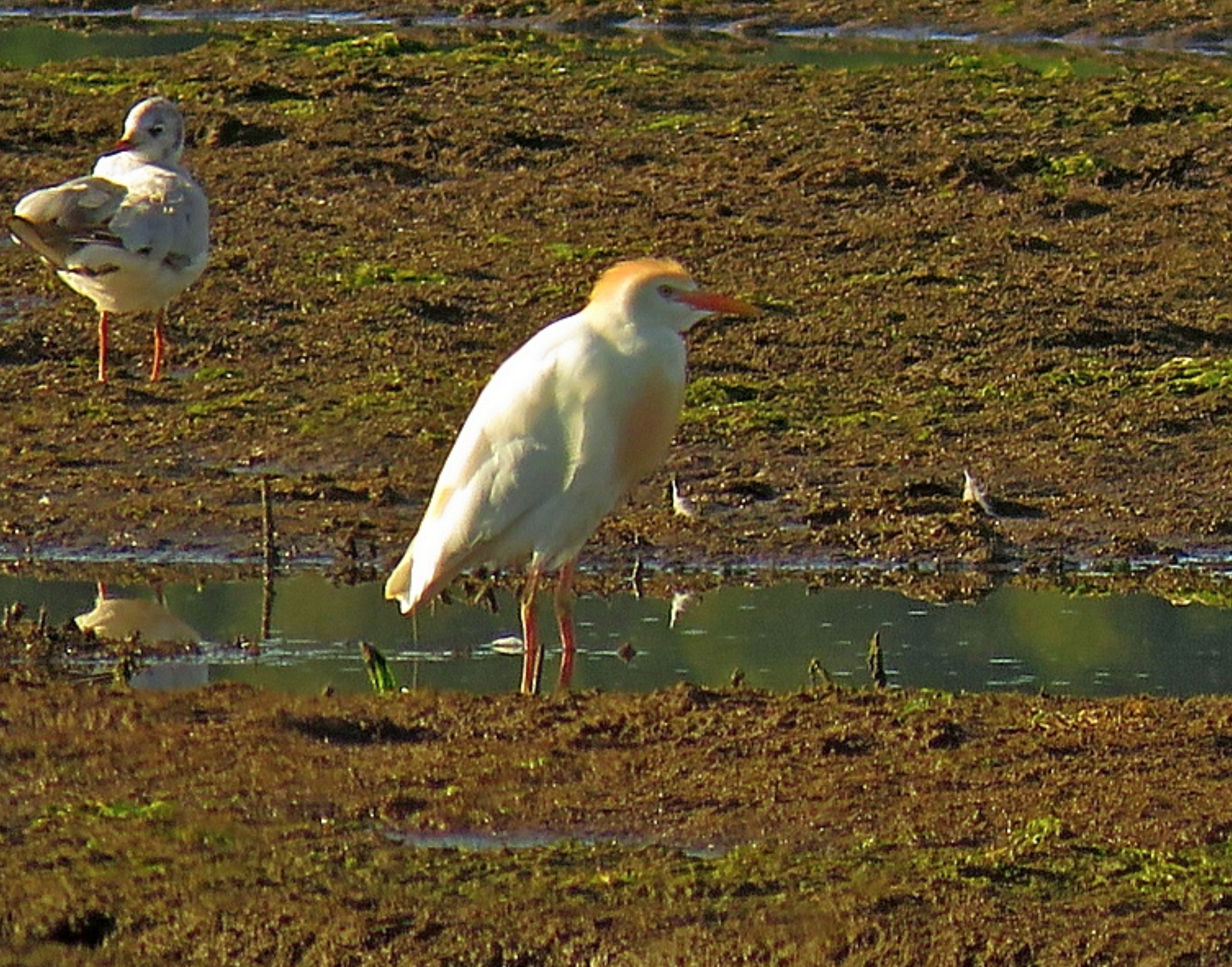
Cetti’s Warbler
Latin Name
Cettia cetti
Status
Resident
Site And Records Information
The first record for the harbour was a spring bird on Brownsea in April 1976 which was actually rejected by BBRC. Swineham, Lytchett Bay and Keysworth host breeding birds now and a third of Dorsets breeding birds are in Poole harbour. Listen out for their explosive song along the river banks of the Frome in April and May.
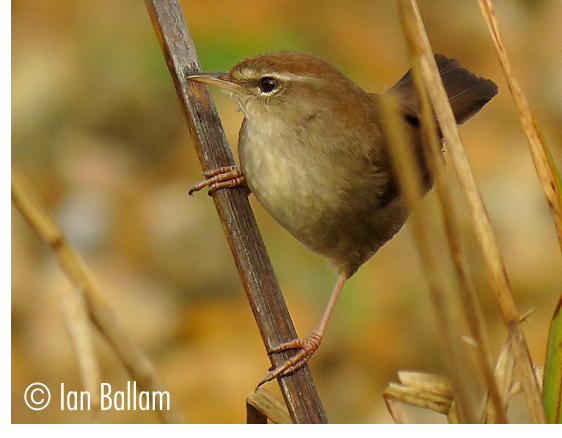
Chaffinch
Latin Name
Fringilla coelebs
Status
Resident
Site And Records Information
Breeds right across the harbour in urban and rural areas. Large numbers can be viewed during visible migration watches at South Haven, Ballard and Glebelands. Large winter flocks of up to 300 birds have been recorded at places such as Arne, Swineham and Soldiers Road.
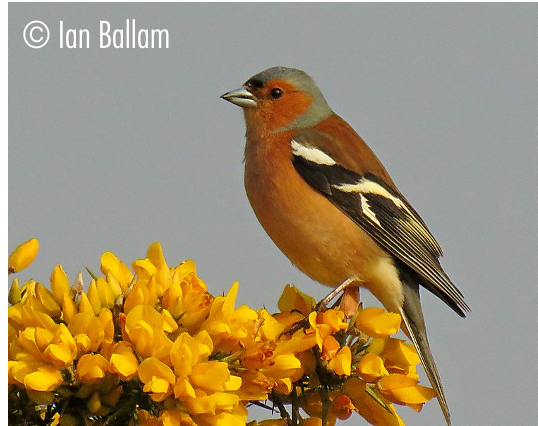
Chiffchaff
Latin Name
Phylloscopus collybita
Status
Common summer breeding resident, passage migrant and winter visitor
Site And Records Information
Found right across the harbour during the breeding season. Any woodland habitat will hold good numbers of breeding Chiffchaff. Passes through in large numbers on autumn migration during Sept-Oct. Winters in mild sheltered areas with available food such as Swineham GP and at the PC World Drain, Holes Bay.
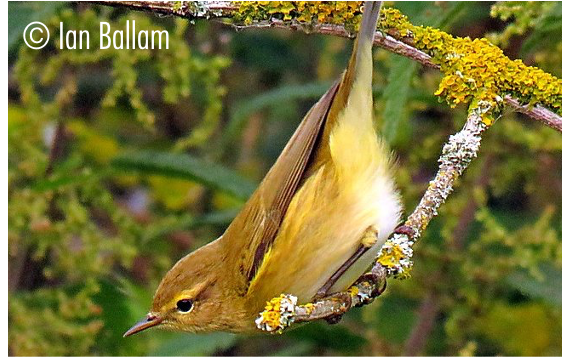
Chough
Latin Name
Pyrrhocorax pyrrhocorax
Status
Former Breeding Species, No Recent Records
Site And Records Information
Future records are not impossible. In 2001 there were a series of records in the Portland/Weymouth area and in 2003 one spent 4 days at St Aldhelm’s Head in Purbeck.
Cirl Bunting
Latin Name
Emberiza hortulana
Status
Former Breeding Species, No Recent Records
Site And Records Information
Used to breed widely across Dorset. Declined dramatically from early 50’s to its extinction around 1974. Was still breeding in the harbour in 1968 with the last singing males at Scotland Farm and Greenland’s Farm in March 1968. No harbour records since, however with populations growing just next door in Devon we can at least dream of seeing see this stunning bird back one day. West Dorset recently experienced a mini influx.
Coal Tit
Latin Name
Periparus ater
Status
Resident
Site And Records Information
This bird loves conifer plantations, of which Poole Harbour has plenty. Breeds throughout the area. Can often be seen feeding with Goldcrest in autumn and winter. Numbers occasionally swell with continental arrivals during late autumn.
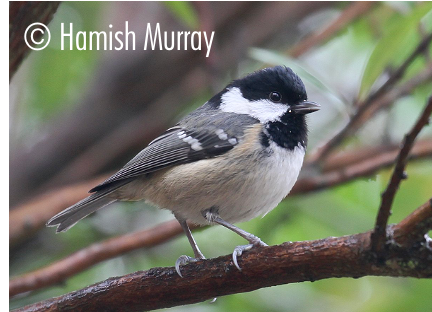
Collared Dove
Latin Name
Streptopelia decaocto
Status
Resident
Site And Records Information
Breeds in rural and urban areas around the harbour, and very common in parks and gardens. Large flocks have occurred with 57 at Poole Park on 24th October 2004.
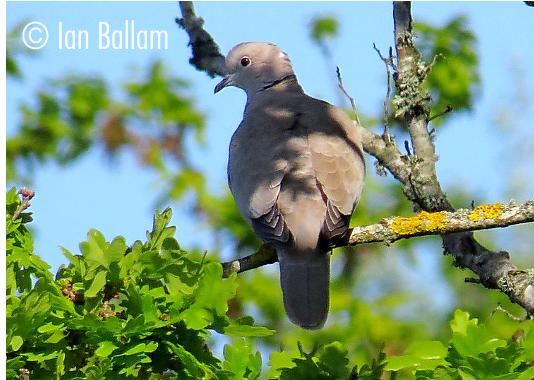
Collared Pratincole
Latin Name
Glareola pratincola
Status
Vagrant
Site And Records Information
Pratincole are exceptionally rare in Dorset and not much commoner across the UK. Collared, Black-winged and Oriental Pratincole have all been recorded in the UK but only Collared has been recorded in Poole Harbour with just 1 record.
1 on 24th May 1977 at Holes Bay – H A Lilley. Incidentley, 5 others were seen within 2 weeks in Britain including one at Lodmoor seen by Martin Cade on 7th June 1977.
Common Crane
Latin Name
Grus grus
Status
Vagrant
Site And Records Information
With populations increasing in eastern and central-southern England it’s no surprise we’re seeing more records of Common Crane in the harbour in recent years. A lovely early account came from Studland whilst showing the Weymouth Grammar School YOC group round Brands Bay on 2nd December 1978 one of the pupils asked Studland warden Rees Cox the identity of six Cranes that flew into Greenlands Farm and alighted in the fields. According to Rees, the birds “alighted and fed in the fields by Brands Bay.”
1 on 16th Aug 1975 at Lytchett Bay
6 on 2nd Dec 1978 at Brands Bay
1 19th & 22nd Sep and 3rd & 10th Oct 1999 at Lytchett Bay (S.Robson et al)
1 on 13th Oct 2004 on the Brownsea Lagoon (many observers)
Recent records
2014
3 on 11th Apr 2014 over Stoborough (N.Hopper)
2016
Holton Lee 2 on 5th Mar (P Morton).
2017
Arne RSPB 1 occasionally between 31st May and 5th Jun. This bird was a colour-ringed individual from Somerset in 2012.
2018
Arne RSPB 2 birds which were seen and heard 24th-26th Sep had been seen to arrive over the chain ferry at South Haven on 24th Sep.
2019
Poole Harbour 1 adult frequented the Hartland Moor/Arne RSPB/Middlebere area between 8th & 28th Jan. (JR Mitchell et al). What was presumably the same bird was seen over Swyre Head on 17th Jan and Durlston CP on 20th Jan. Although it was seen to be un-ringed, its origins are unknown, as not all those from the reintroduction scheme carry rings. 1 flew down the Piddle Valley and the Wareham Channel on 16th May (P Hadrill), with another at Keysworth on 17th Sep P Hadrill) and in Lytchett Bay on 28th Sep (ID Ballam).
2020
Wareham 1 over on 2nd Mar (Bob Ford).
2023
Lytchett Fields RSPB – 2 over on 22nd Feb.
Middlebere – 2 west on 16th Jan, then north over Wareham.
Middlebere – 1 on 17th Mar then flew east over Swineham GPs.
Wool – 3 west over South Mead on 9th May were then noted further up the River Frome over Charminster later that day.
Wareham Channel – 3 west on 22nd Oct.
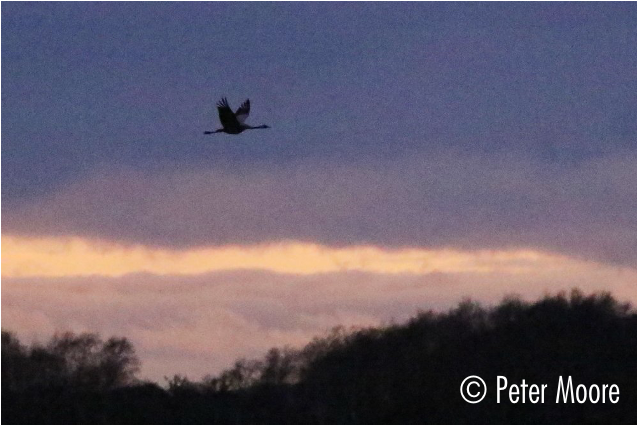
Common Gull
Latin Name
Larus canus
Status
Resident
Site And Records Information
Numbers build through the autumn starting in October and increasing towards December. Otherwise present all year in the harbour in tens rather than thousands, with less records from May to July. The Wareham channel, Poole Park, Lytchett Bay and Holes Bay on a low tide hold good numbers in the winter. The winter roost in Wareham Channel can be huge as large numbers build up then pass through the harbour in February and March on their way to Norway and Sweden.
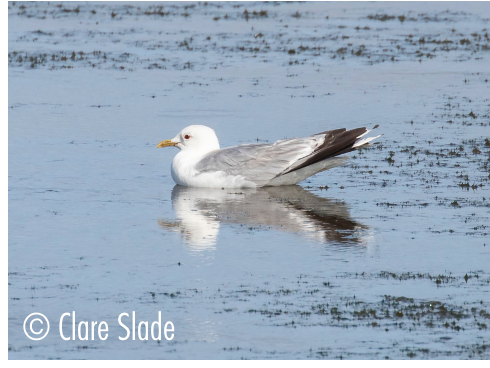
Common Nighthawk
Latin Name
Chordeiles minor
Status
Vagrant
Site And Records Information
Likely to never occur again, or certainly not any time soon this amazing record still fills many local birders with envy.
1 at 11 a.m. on 23rd Oct 1983 at Studland Village (M.Massey, K.Massey, M.Howard). BB mistakenly published the date as the 25th Oct.
Common Rosefinch
Latin Name
Carpodacus erythrinus
Status
Vagrant
Site And Records Information
A remarkable first Poole Harbour record, feeding in an urban garden on sunflower hearts and mixed seed. Surely some more records will follow this one, albeit in a perhaps more traditional habitat and location.
1 from 28th Jan to at least 10th Apr 2013 in a Broadstone garden (E. Brodie et al). A remarkable first Poole Harbour record, feeding in an urban garden on sunflower hearts and mixed seed.
Common Sandpiper
Latin Name
Actitis hypoleucos
Status
Passage Migrant & Winter Visitor
Site And Records Information
Birds pass through the harbour in spring and autumn. Autumn passage actually begins during mid summer with the Brownsea lagoon, Lytchett Fields, Holton Pools and Holes Bay being hotspots, it’s also at this time that the maximum site count of 27 was at Studland on 29th July 1988 and the harbour maximum of 47 was in August 1990. Birds can be found at any quiet tidal bay or creek but Lytchett Bay, Brands Bay, Middlebere and Swineham all host birds.
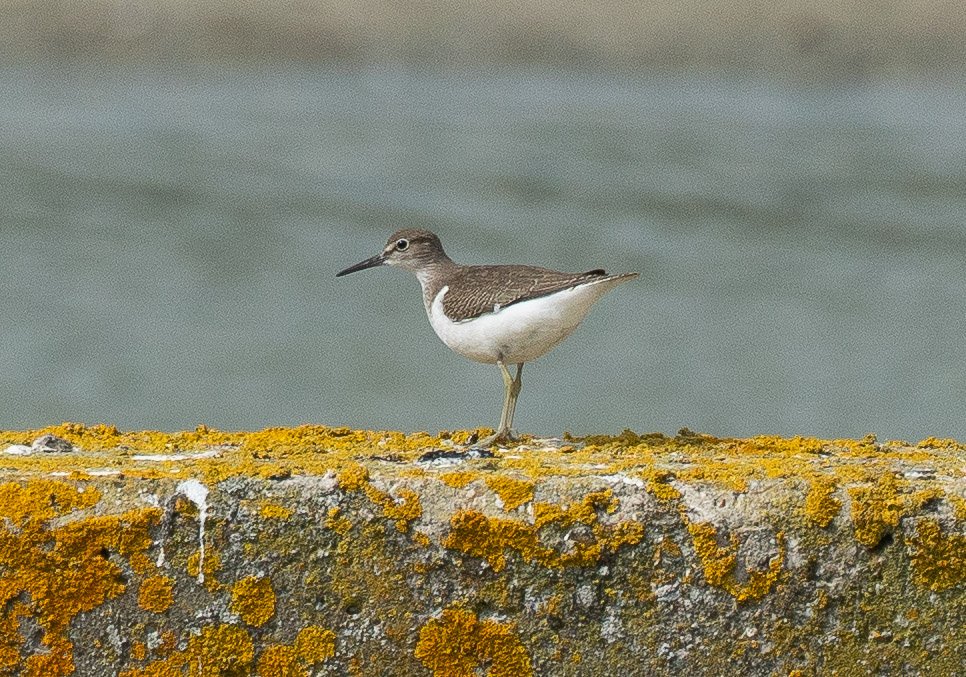
Common Scoter
Latin Name
Melanitta nigra
Status
Passage Migrant & Winter Visitor
Site And Records Information
Pre 1960 large flocks of Common Scoter used to gather in Poole Bay and included 100+ in 1958. A J Bull wrote in the 1958 Bird Report that there were “large gatherings on a scale not recently recorded in Poole Bay with up to 1000 on March 20th. All gone by the next day.” Unsurprisingly this is the maximum count for the harbour. In the late 1990’s around 20 birds was a more typical count. Otherwise odd birds were found in the Balls Lake area of the harbour, in Brands Bay and off Ham Park.
More recently Common Scoter numbers have stayed pretty stable with between 3-10 present each year and the last 5-year average being five per winter. Common Scoter are best looked for off Knoll and Middle Beach, Studland or in the south east corner of the harbour at sites like Brands Bay, Goathorn or central harbour.
Passage birds are noted annually past Branksome and Old Harry and on good days can reach double figures.
Most recently (and amazingly), it’s been discovered that there’s an annual night migration of Common Scoter in the early spring and late Autumn. On a calm night in late March or early April passings of Common Scoter have been sound recorded and seen with thermal imaging equipment tracking north over the harbour and heading in land, allowing keen birders the opportunity to ‘tick’ Common Scoter on their garden lists by listening carefully. Extraordinary!
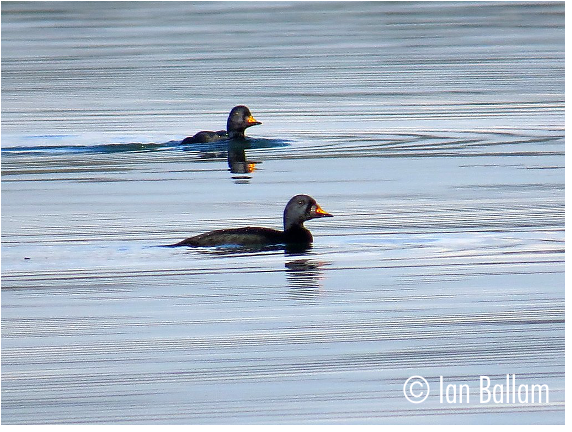
Common Tern
Latin Name
Sterna hirundo
Status
Summer Visitor & Passage Migrant
Site And Records Information
Brownsea is the only breeding site in the harbour for Common Tern. They outnumber the Sandwich Tern but both can be seen heading out of the harbour mouth to feed amongst the swimmers and yacht’s. Common Terns first bred in the harbour in 1951 and immediately populated the Dorset National Trusts tern islands when they were built in 1963. Eight pairs bred then and this built to 90 pairs in 1970. Numbers continued to rise and in 1990 when the Brownsea breeding colony reached 130 pairs and was classified of National importance. In 1997 pairs on nests reached 173 but heavy rain caused damage. In 2012 pairs bred, but only 1 chick fledged! There was a remarkable ringing recovery in 2000 involving a bird ringed at Brownsea in 1999 and found in Cape Province, South Africa after being hit by a train along with 45 other terns.
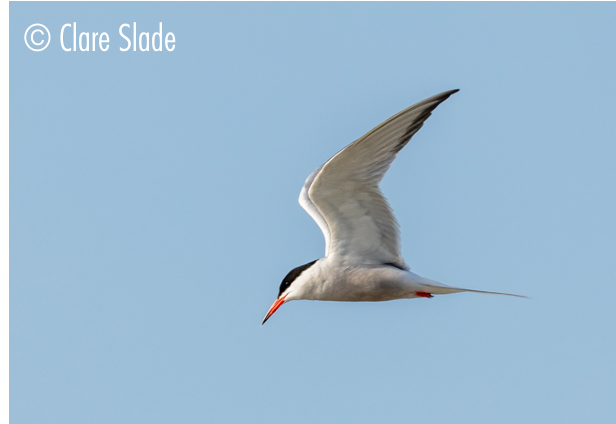
Continental Cormorant
Latin Name
Phalacrocorax carbo sinensis
Status
Passage Migrant & Winter Visitor
Site And Records Information
Sinensis’ (continental) Cormorant are known to be more migratory than ‘carbo’ with juveniles dispersing long distances within two months of fledging in June, and what appear to be juvenile sinensis are in large numbers on Brownsea in August and September.
Sinensis are known to be more migratory than carbo Cormorants with juveniles dispersing long distances within two months of fledging in June, and what appear to be juvenile sinensis are in large numbers on Brownsea in August and September. Maybe significant numbers of European migrants of this taxa are mixing with the dispersing carbo’s from the west of England, Wales and Ireland as they move to the east of England and this creates a peak. The identification of some birds is still very difficult and is not helped by this species habit of never sitting still and allowing careful study of the shape of the gular area. Using the gular patch alone is thought to enable eighty percent of sinensis to be identified. Whether sinensis breed in the area is not known, but birds breeding inland should be checked as they are most likely to be this type.
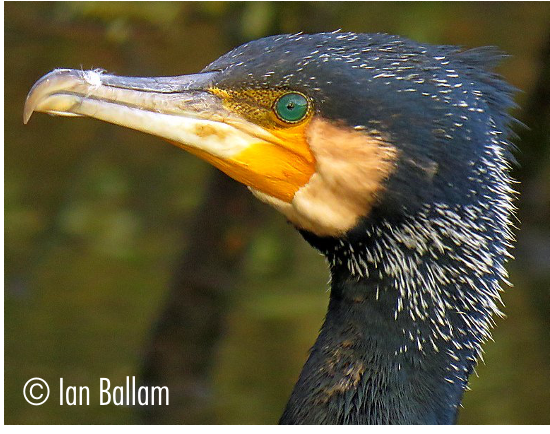
Continental Lesser Black-backed Gull
Latin Name
Larus fuscus intermedius
Status
Scarce Passage Migrant
Coot
Latin Name
Fulica atra
Status
Resident
Site And Records Information
Coot breed at certain sites like Hatch Pond, Little Sea, Poole Park, Hatch Pond and Swineham. Numbers can swell during the winter with many birds at Poole Park, but can remain very scarce in certain areas throughout the harbour. There was a 650+ in Poole Harbour during the cold spell Feb 1963 and the average 5 year peak between 2014 and 2019 is 222.
It’s also recently been discovered that just like Water Rail and Moorhen, Coot are very active at night, calling frequently above the harbour as they transit or migrate across from one site to another, or arrive from areas much further afield. They may also do these regular night flights to simply to defend a territory too. Coot can be extremely rare in some areas of Poole Harbour, take Lytchett Bay for example where there have been less than 5 visual records in the last 5 years (2015-2020), however, stick a microphone out at night and you can record Coot calling directly over the microphone every single night!
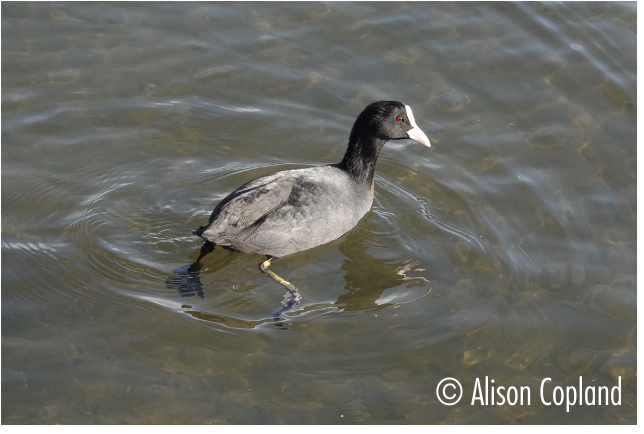
Cormorant
Latin Name
Phalacrocorax carbo
Status
Resident
Site And Records Information
Poole Harbour is nationally important passage and wintering area for ‘carbo’ Cormorant with over 3% of the British population. Breeding takes place on the cliffs of Ballard Down with a historical maximum count of 172 nests, but only 86 nests were counted in 1999 and 57 in 2003. It’s thought now that breeding totals are now in the low double figures. This species is common at many sites around the harbour later in the year but numbers increase in autumn and winter where they’ll occasionally join the large rafts of up to 700 ‘sinensis‘ Cormorants that feed in the deep channels off Shipstal, Brownsea and the Wareham Channel. Continental ‘Sinensis‘ Cormorants are known to be more migratory than ‘carbo’ with juveniles dispersing long distances within two months of fledging in June, and what appear to be juvenile sinensis are in large numbers on Brownsea in August and September. Large rafts of up to 700 sinensis Cormorant can occur by late October, feeding as one unit out in the centre of the harbour.
In 1966 John Ash recorded that on “13th February, three of the southern race flew out with 80 of the usual race.” While this is the first documented record for the harbour, Britain’s first record was in Christchurch in 1873, so it had probably been sneaking round well before that. Now Cormorants of this continental race sinensis seem to have increased in the harbour over the last 30 years mirroring a similar increase across the whole of eastern and southern England. Spring adults are conspicuous and can be seen in the Wareham channel or on the Brownsea Lagoon.
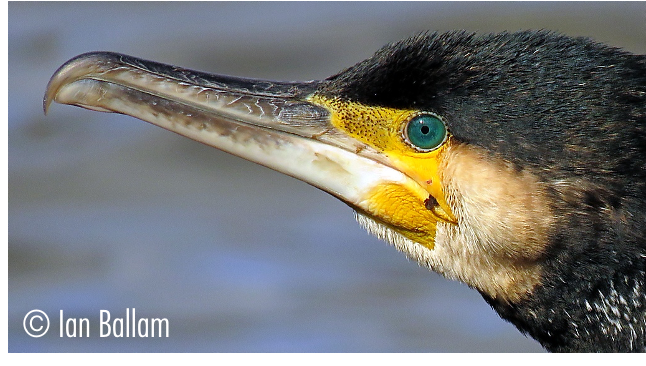
Corn Bunting
Status
Former Resident, now Rare Visitor
Site And Records Information
The 1968-72 Atlas found that the species was widely distributed across Dorset including parts of Poole Harbour. In Jan 1963 up to 17 were attracted to corn put out for waterfowl at One Acre Pool, Studland. This was during the prolonged freeze in that famous winter. A significant decline began in the 1970’s and continued until the mid-90’s. Looks like the best hope now is a fly-over during a visible-migration watch or there just may be one in a winter finch and bunting flock?
Corncrake
Latin Name
Crex crex
Status
Vagrant
Site And Records Information
Like the rest of the country, Corncrake was at one time a common summer resident but started to disappear around 1900. By 1950 it had virtually ceased to breed in Dorset. Since then only migrants have been found. There are 9 records since 1958 but none for 19 years. Most ‘recently’…..
1 an immature male (“sexed by dissection”) being found dead by Mike Tuck outside Studland P.O. on 8th September 1966.
1, possibly 2, on 16th Apr 1970 calling at Fitzworth Creek, Corfe River.
1 male found dead on 10th Sep 1970 at Studland
1 on 25th Sep 1996 at Lytchett Bay was seen in flight as it was flushed from rank grass (S.Robson)
Crossbill
Latin Name
Loxia curvirostra
Status
Resident
Site And Records Information
Numbers of Crossbill around Poole Harbour are very much dependent on invasions. The actual underlying population which is centred around Rempstone heath is quite low, however irruptions are frequent and in those years they can be very common. In addition birds can also stay in the area for several years sometimes until the next invasion. Arne frequently hosts Crossbill in and around it’s pine areas. During August, September and October parties of Crossbill are on the move and can frequently be observed passing over head any habitat, but learning their contact/social calls in vital to their ID. Glebelands, South Haven and Ballard are best sites for hearing and seeing Crossbill on migration.
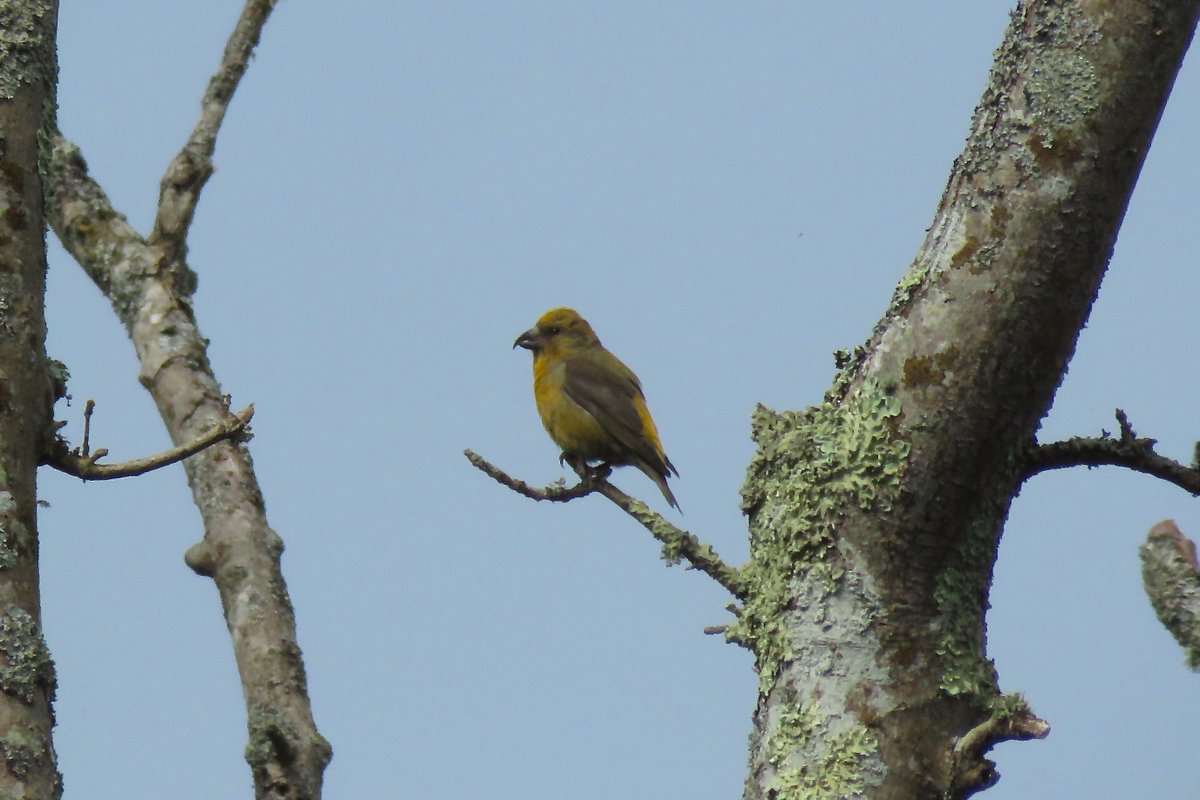
Cuckoo
Latin Name
Cuculus canorus
Status
Summer Visitor
Site And Records Information
Normally arrive mid to late April. The heathlands around the south and west of the harbour are good sites such as Coombe Heath (Arne), Middlebere, Stoborough Heath, Hartland Moor and Godlingston Heath. They can be heard through the day and night, especially moonlit nights until around late June and the adults are still around until mid July although harder to spot once they stop calling. The large number of nesting Reed Warblers would suggest that the harbour is a good breeding area however records of juveniles only occur once or twice a year.
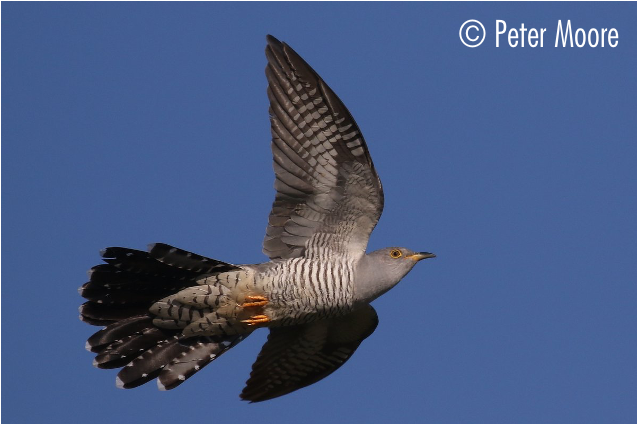
Curlew
Latin Name
Numenius arquata
Status
Resident
Site And Records Information
Common throughout the harbour, especially during the winter. Large gatherings of up to 300 birds can be seen from the RSPB hide at Shipstal. Harbour maximums can reach up to 2000 with an almost equal spread throughout the southern and western bays. There has been proved breeding on Upton Heath in 1981 and 82 and they have been heard singing on Hartland Moor in breeding season too. Ringing recoveries show most of our wintering birds are from either, Sweden, Finland, Germany or the Netherlands. On a low tide during the winter Curlew can be found on almost any exposed mud around the harbour with Holes Bay, Brands Bay, Middlebere and Upton CP offering good views.
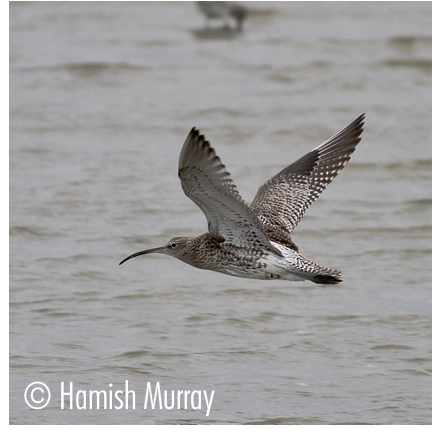
Curlew Sandpiper
Latin Name
Calidris ferruginea
Status
Passage Migrant
Site And Records Information
Most reliably seen on Brownsea lagoon, in Middlebere and at Lytchett Fields in September when small numbers of juveniles move through. The harbour maximum is 75 on Brownsea on 31st August 1969, and 60 there on 4th Sept 1986. Large flocks have also been seen on Baiter with a notable count of 47 on 12th-15th Sept 1993. Numbers like this are very rare nowadays but always worth keeping a eye out for small groups. In recent years (since 2013) the newly created wet fields at Lytchett Bay have become a regular site for this species each autumn and with the new visitor infrastructure at RSPB Lytchett Fields, views of this species have become a lot easier. Small numbers are frequent on the Brownsea Lagoon each autumn, often viewable from both DWT Hides.
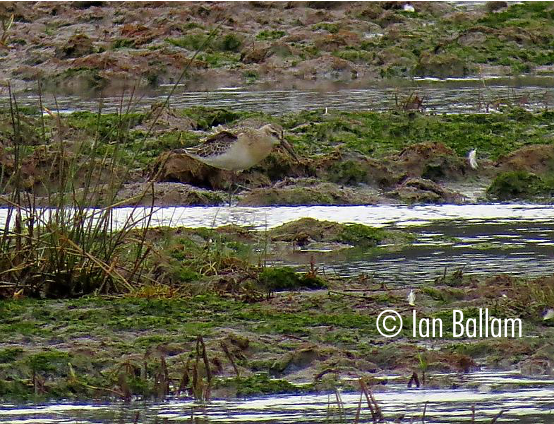
Call 01202 641 003
© 2025 Birds of Poole Harbour Registered Charity No. 1152615
